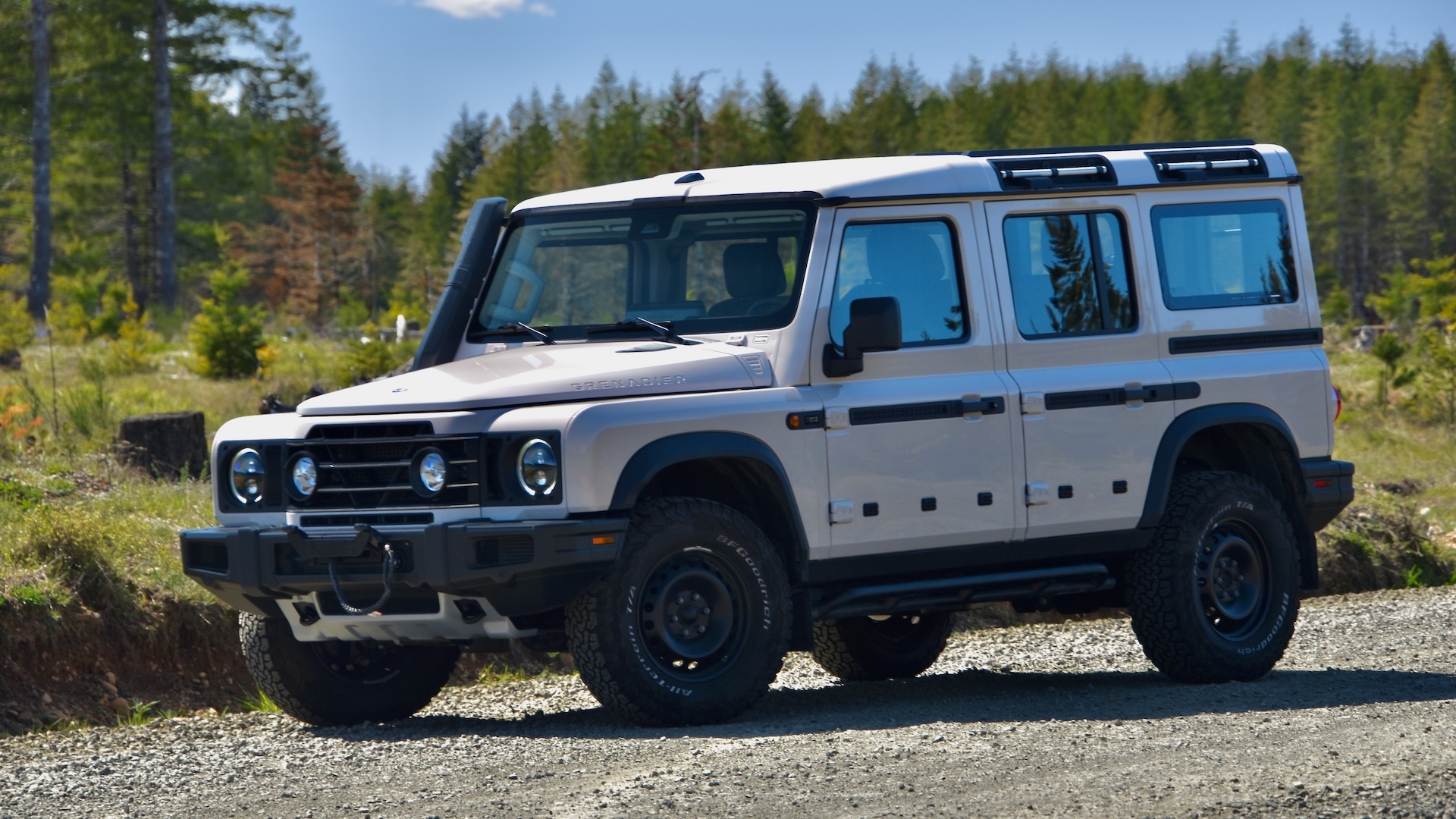The Ineos Grenadier has been out for a while now, and the reviews are mixed. Everyone agrees that it’s enormously capable off-road and that its neoclassic design is a triumph. I’m with them; the Grenadier is a juggernaut that’s a unique riff on a retro shape. Still, it isn’t a total slam dunk. Now that I’ve driven the Grenadier, I’m left puzzled by its steering—if you ask me, it’s just not up to the standard of a modern vehicle. Ineos insists its old-school solution is fine, but the devil’s in the details, and that’s where I think Ineos whiffed.
The Grenadier, if you weren’t already aware, is the pet project of a British chemical executive who tried to buy up the tooling for the last-gen Land Rover Defender when it was discontinued. He was denied, so he commissioned this modern re-interpretation made from OEM-grade mechanicals. It’s a blend of parts from ZF, Tremec, BMW, Eibach, Carraro, and more—all name brands used in vehicles millions of people rely on every day. In theory, the Grenadier should absolutely be up to the standards of a 21st-century vehicle from a legacy make.

My driving time with the Grenadier was limited to a short series of on- and off-road tests at the same event where I compared the Toyota Tacoma TRD Off-Road to the Nissan Frontier Pro-4X. I found a lot to like, from its unchallenged off-road performance to its thoughtful design and quiet, comfortable cabin on the road. But I couldn’t get past how needlessly finicky it is to steer.
The Grenadier uses a hydraulically assisted recirculating ball steering box, produced by Bosch, which is the gold standard for off-road applications for a reason. It’s a proven-tough design that doesn’t transfer force to the wheel, so you won’t break your wrists while crawling—or by hitting a boulder at 50 mph. Though recirculating ball is mostly used for vehicles that prioritize ruggedness over sophisticated handling, like the Jeep Wrangler, it’s still capable of both. The Dakar-winning Mitsubishi Pajero Evolution I drove last year is proof of that. Unfortunately, the execution is where Ineos stumbles.
On a well-maintained road, the Grenadier wandered like its alignment was off, requiring constant input to stay in its lane. On-center response is alright, but the steering’s nonlinear response slows down from there, and it’s almost four whole turns lock-to-lock. This complicates any direction change requiring significant steering input, which is a lot of them. I’m honestly not sure an emergency maneuver is even possible, and the steering wheel’s design doesn’t help.


To be clear, I love the polite quick-toot button with a bicycle on it (self-explanatory), which ought to be standard industry-wide. The D-pad-style button layout is intuitive to my Xbox controller-trained hands, too. But the wheel’s top-dead-center mark is too small and faint, and its overall shape too symmetrical to gauge its orientation out of the corner of your eye. Fast input like you might make while on the trail or in the city can make you lose track of where the wheels are pointed. I can see this clumsiness causing a fender-bender or even a ruptured sidewall. To make matters worse, the steering was sometimes so heavy while stationary that I wondered if the power steering was broken.
Ineos says the slow steering ratio makes it precise, and it’s adamant that drivers get accustomed after a test drive. But there’s no precision in violently flailing at the wheel to turn a tight corner, nor is there a shortage of other negative feedback, even from owners. Industry colleagues who tried the Grenadier alongside me didn’t love its steering either, and even my friends who won the Alcan 5000 in a Grenadier called its response “lumbering” in Gear Junkie. Other prominent critics include Top Gear, CarThrottle, Evo, Hagerty, Auto Express, and Autocar.
My perspective isn’t a rare one, and it’s not just a matter of recirculating ball versus rack-and-pinion like you find in most cars. It’s that I don’t think the Grenadier’s is good even by the lowered standards of recirculating ball. At no point did the Pajero Evolution’s steering alarm me, only encourage. And while the two-door Wrangler Rubicon I drove alongside it also isn’t known for its handling, it at least didn’t feel out-of-place turning a tight corner at low speed. Y’know, like you might do on a trail.

Some Grenadier owners with more time than me in Wranglers and Defenders disagree, so take that into consideration. The satisfied Grenadier customers seem to vastly outnumber the disgruntled, though as one user of The Ineos Forum puts it, that seems to be down to expectations. If your idea of the perfect off-roader is a modernized, more reliable version of a British SUV from the 1980s (or ‘40s, depending on where you draw the line), the Grenadier is the only thing that fits the bill. But if you expect the $73,100 Grenadier to work as hard to justify its price tag as a Lexus GX, you’ll be as disappointed as I was.
Got a tip or question for the author? You can reach them here: james@thedrive.com
